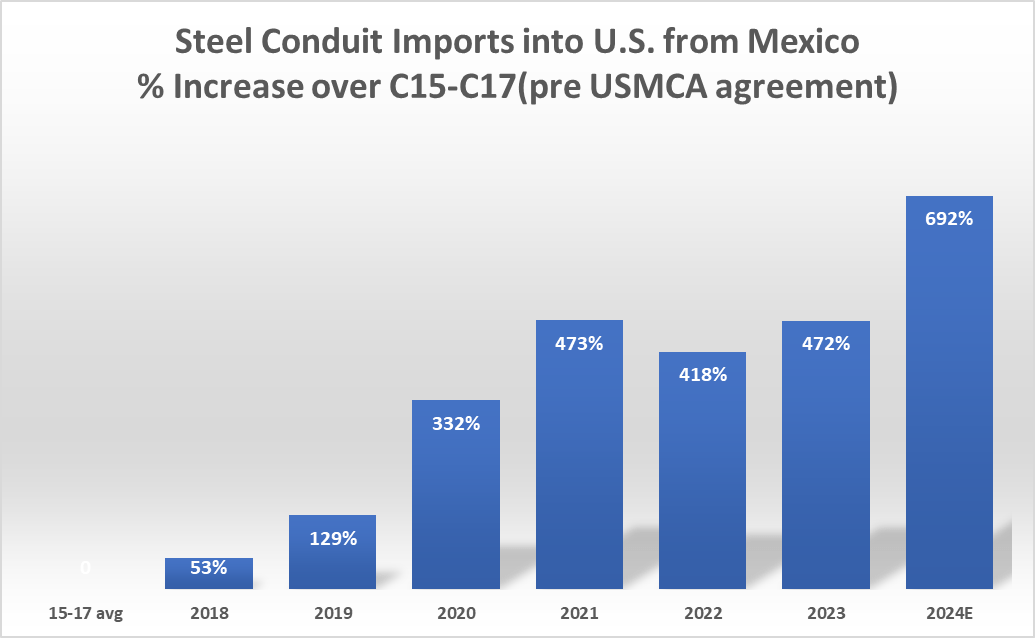
NEW YORK — In late 2013, Cisco chief executive John Chambers used a portentous phrase while telling analysts that sales in emerging markets were spiraling downward, forcing the networking equipment company to cut its three- to five-year revenue growth target: “We’re the canary in the coal mine.”
[Jeffrey Rothfeder | April 25, 2015 | Special to The Washington Post (appearing in lagrangenews.com]
t was meant to be a candid assessment of the instability in global markets. But rather than being the harbinger of danger, Cisco was just the latest victim of globalization, the tantalizing but perilous business principle that has — quietly — counted among its casualties some of the world’s largest companies.
Indeed, although multinational executives avoid talking about it publicly, profits in global markets are underwhelming — and doing business internationally is full of unanticipated risks.
“Even for the most successful multinationals, profit margins in international markets are on average lower than margins in the domestic market,” said Robert Salomon, a professor of international management at the NYU Stern School of Business. “It’s the liability of foreign markets. By virtue of the fact that you are foreign, you are at a disadvantage.”
That’s a far cry from the way globalization was pitched, as the strategic imperative du jour nearly two decades ago. It was supposed to act like a rising tide, lifting all boats in poor and rich countries alike. Buoyed by hundreds of thousands of new assembly line jobs courtesy of multinationals in emerging nations, the middle class would swell, which in turn would propel higher local consumption. More factories would be needed to meet the demand, further raising local standards of living and handing the largest non-domestic companies a vast and enthusiastic new customer base.
Meanwhile, in the United States and Europe, consumers would have their pick of inexpensive items made by people thousands of miles away whose pay was much lower than theirs. And in time trade barriers would drop to support even more multinational expansion and economic gains while geopolitical cooperation would flourish.
Western corporations — hoping to find new fast-growth revenue channels and inexpensive manufacturing opportunities to augment mature, developed economies at home — moved to set up shop in far-flung regions like China, Brazil, Russia and India, where the greatest GDP gains were anticipated, as well as in second-tier emerging nations such as Thailand, Malaysia, the Philippines and Nigeria.
Yet despite all this activity and enthusiasm, hardly any of the promised returns from globalization have materialized, and what was until recently a taboo topic inside multinationals — to wit, should we reconsider, even rein in, our global growth strategy? — has become an urgent, if still hushed, discussion.
“We have believed for some time that a large global footprint is critical to our success and to the success of any company in the auto industry,” said an international executive at a top-six multinational auto company. “But given recent events, we can’t help but wonder if we should be a little more hesitant, less eager and more discerning about where we invest our efforts.”
Or put more diplomatically, General Motors President Dan Ammann told a Detroit investors conference in January that the Chinese auto market “is maturing rapidly . . . (Its) rate of growth will decrease year-to-year.”
This is a surprisingly tepid forecast for an executive whose company has, in essence, gone all-in on globalization, and particularly in China. GM has invested upward of $20 billion on joint manufacturing ventures there, and is No. 1 in auto sales in the country.
However, in 2014 GM made $2.1 billion in China, about a third of its earnings in North America, where it sold 130,000 fewer vehicles. The problem is, around half of the vehicles that GM sells in China are Wulings, inexpensive, low-margin minivans designed by one of General Motors’ Chinese partners, targeted mostly at commercial buyers. Indeed, Chinese customers bought 1.6 million Wulings and only 79,000 high-profit Cadillacs in 2014.
The shortcomings of globalization manifest in any number of ways. For one thing, international trading patterns point to an increase in protectionist attitudes rather than a golden age of open borders. Between 1986 and 2005, global trade volume increased at a rate of about two to three times that of GDP growth, but the ratio since then has fallen dramatically (except for one year) and is now close to one to one, according to research by UBS strategist Bhanu Baweja.
Moreover, the recovery in world trade volume is much slower in this post-recession period than prior ones, Baweja said. Part of the problem is that the G-20 countries (the biggest economies and trading partners in the world) added more than 1,200 restrictive export and import measures since 2008 — 12 percent more in just the past year — despite a so-called standstill agreement.
Somewhat surprisingly, cross-border capital flows are equally anemic. Despite the common perception that multinationals these days manufacture their products anywhere but the West, global foreign direct investment (which reflects the amount that companies earmark for doing business in other countries) has fallen to a mere 2 percent of global GDP from 4 percent before the recession.
Still, the most tangible metric that belies the Pollyannaish depictions of globalization is corporate financial performance, which is also a window into the fundamentals of local economies. Although most companies don’t separate out geographical earnings, revenue comparisons provide an apt picture — and few multinationals can boast big returns in global markets. (For U.S. companies, some of the recent revenue slippage can be attributed to the strong dollar; but considering that this pattern of low or no growth in emerging nations has been evident for a few years and that the dollar has consistently been strong against the Chinese renminbi, currency shifts are only a small part of the picture).
In the first quarter of 2015, for example, IBM revenue fell 3 percent in the BRIC (Brazil, Russia, India and China) countries. Caterpillar, which is a bellwether for global construction and agricultural activity, reported first quarter revenue shortfalls of 13 percent in Asia and 18 percent in Latin America. Meanwhile, Unilever announced a 2.4 percent revenue decline in 2014, chiefly driven by a steep drop in consumer activity in emerging nations, which are responsible for 60 percent of its sales.
Those vast new consumer markets in globalized nations have not emerged either. For example, Chinese household consumption accounts for about 34 percent of GDP — down four points in the past decade — compared with a healthier 70 percent in the United States. And Chinese consumer diffidence is not an outlier.
“Growth in consumer spending in 2014 hit multiyear lows in many countries,” said Unilever CEO Paul Polman, analyzing his company’s results. “In South Africa, it is half to less than 2 percent, and in Brazil it had fallen to just 1 percent. There was no volume growth in these markets.”
There are myriad reasons why these markets have lagged, some of them unique to specific countries or regions. For instance, China’s one-child policy has produced a penurious generation of young adults who are the sole support for aging family members. And in parts of Southeast Asia and Africa, the infrastructure in rural areas, where much of the population lives, is too primitive to support extensive retail activities. But equally problematic is that the growth of the middle class in China and most other developing economies has been slow. And these newly minted consumers face volatile, often expensive prices for housing, food and other staples.
“The biggest contribution to Chinese growth for many years has been government investments, about 50 percent of GDP, off the charts compared to any country in the world ever,” said Geoffrey Dennis, UBS’s head of global emerging markets strategy. “The current structural reform program hopes to move more toward a consumer-supported economy. But that will take time.”
To protect the market share of domestic firms, emerging nations have attacked foreign multinationals. For example, in February, China levied a record $975 million fine against U.S. chipmaker Qualcomm for violating the country’s antimonopoly regulations by offering tiered prices for technology licenses based on volume, a common practice in global industries. This penalty will cut Qualcomm’s 2015 earnings by as much as 58 cents a share, or 15 percent of its profits.
In the past year, as many as 30 multinationals were placed under investigation — some were penalized and others raided — by Chinese government authorities for any number of dubious infractions. Among those in the crosshairs: drugmaker Glaxo SmithKline (corruption), Apple (inadequate warranties), Microsoft (monopolistic practices), and Audi, BMW and Daimler-Benz (price gouging). No surprise, then, that more than half of multinationals responding to a survey by the American Chamber of Commerce in China said that Chinese regulators “targeted” foreign firms and that laws and regulations favored domestic companies.
Last August, Russia shuttered four McDonald’s locations in Moscow, the chain’s busiest stores in the country, citing sanitary violations. Russian authorities produced little evidence; the step came after sanctions were imposed by the West for Russia’s role in destabilizing Ukraine.
“Multinationals are very nervous now, and they should be,” said Mark Leonard, co-founder of the European Council on Foreign Relations. In the past, only some sectors — mining, oil and gas, commodity companies — had to worry about geopolitics. Now companies that make fizzy drinks or handbags or chocolate are finding their supply chains, their markets, their operations completely blown apart by geopolitical risks and unfavorable treatment.”
Less visible but arguably more harmful are cyber strikes. In 2013, at least 3,000 U.S. companies were victims of data theft and network disruptions, according to published reports. In some cases, the hackers are believed to have ties to rogue regimes in Asia and Eastern Europe and their aim appears to be to destabilize global commerce. One example: the digital break-in at Sony in November — which paralyzed the entertainment company’s computer systems and led to the release of sensitive e-mails and documents — was backed by the North Korean government, the Obama administration said.
That incident pales against other cybercrimes targeting multinationals. Possibly the biggest is an ongoing infiltration that began in late 2013 of a hundred of the largest financial services firms by cybercriminals from China, Russia and Ukraine. These hackers are essentially electronic mercenaries who are expanding their operations to Asia, the Middle East and Africa, according to Kaspersky Labs, a software security firm based in Moscow. In all, as much as $1 billion may have been stolen from the banks in this digital heist, Kaspersky said.
Back on land in developing countries, state-owned enterprises, or SOEs, pose competitive challenges. They are financially backed by central and local governments and are notorious for crony capitalism in which they gain access to local contracts, markets and capital unavailable to foreign firms.
Well over half of all companies in China, Russia, Indonesia, Malaysia and Vietnam, to name a few, count their governments as stakeholders. These enterprises — in mining, telecom, banking, construction, manufacturing and even retail — receive preferential treatment in lending rates, government investment and subsidies with little accountability for their results. Armed with cheap money, undisturbed by impatient investors and inured from the threat of failure if they underperform, SOEs are often guilty of “overcapacity, inefficient cost control and slow industrial upgrading,” said analyst Li Jin of the China Enterprise Research Institute.
Indeed, the return on assets for Chinese SOEs is about 5 percent, less than half the return of private domestic companies, according to data compiled by the Carnegie Endowment for International Peace. These results would be even worse if multinationals weren’t forced to form joint ventures with state-owned enterprises.
Given the failures of globalization, virtually every major company is struggling to find the most productive international business model. Several approaches have emerged.
Reshoring — or relocating manufacturing operations back to Western factories from emerging nations — is one option. As labor costs escalate in places such as China, Thailand, Brazil and South Africa, companies are finding that making products in, say, the United States that are destined for North American markets is much more cost-efficient. The gains are even more significant when productivity of emerging countries is taken into account. For instance, despite significant activity by multinationals in Brazil and Mexico, the GDP per employed person in those countries hasn’t budged since 1980. By way of comparison, in the United States during that period, productivity has nearly doubled. Moreover, new disruptive manufacturing technologies — such as 3-D printing, which allows on-site production of components and parts at assembly plants — make the idea of locating factories where the assembled products will be sold more practicable.
There is some debate about how much reshoring is actually underway. Anecdotally, there is evidence of its strength: GE, Whirlpool, Stanley Black & Decker, Peerless and many others have reopened shuttered factories or built new ones in the United States. Nonetheless, some economists argue that it is a drop in the bucket compared to the multinationals that fled a decade ago.
Still, recent data compiled by UBS negates the strength of this point. For one thing, U.S. manufacturing output has recovered faster since the recession than it had after other downturns; output is now about 97 percent of what it was in 2008; six years out in prior post-recession periods, output struggled to top 90 percent. Meanwhile, imports are lagging significantly compared to earlier post-recession eras. In addition, private sector business investment in the United States is growing at almost twice the rate of foreign direct investment by U.S. multinationals.
A few companies are choosing a relatively unorthodox globalization strategy, an approach that could be called localization. The motorcycle and auto manufacturer Honda has been in the forefront of this strategy, which involves setting up full-scale operations — factories, engineering sites, research facilities, suppliers and logistics channels — in regions around the world to provide customized products. In doing so, Honda has quietly remade itself from a Japanese multinational with smaller operations elsewhere into a company whose largest subsidiary is an autonomous U.S.-based producer of cars for the Americas, followed by similar operations in China, Japan, Thailand, Brazil and numerous other places, as well as separate businesses making motorcycles, power products and new technologies such as robots and alternative energy equipment.
In the year-and-a-half since Cisco’s Chambers made his comment about the deepening problems in emerging markets, the company has painstakingly attempted to rebuild its relationships in developing countries. Primarily, its management has worked more closely with governments and local businesses to assure them that Cisco is not in league with the National Security Agency in global eavesdropping schemes and that the technology company would be more sensitive to cultural differences. The strategy has produced some results. Instead of tumbling revenue in emerging markets, the company has eked out about 1 percent growth.
“It’s a very dynamic situation,” said Chuck Robbins, who heads Cisco’s worldwide sales organization.
That’s about the best way to sum up globalization now. Instead of flat and seamless, globalization is full of hurdles and obstacles. There’s money to be made for multinationals the world over, but they are going to have to rethink their strategies for making it. Though presented as a way to eliminate economic disparities and magically expand multinational revenue streams, globalization is, simply put, still a barely profitable and perplexing strategy for most companies.
Rothfeder, a financial journalist and author, was formerly editor in chief at International Business Times.













